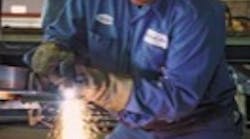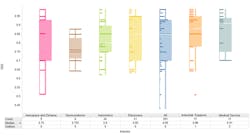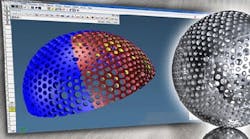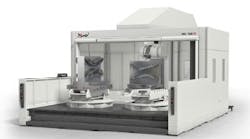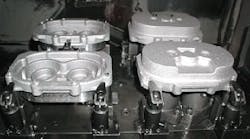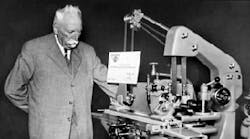I wish that people would call me and described their job so that I could help them choose the right process rather than have them settle on a process and tell me that's what they want to buy," said drew elliott, owner of demo sales Co. in Kalamazoo, Mich. (www.demosales.com).
Elliot has more than 20 years experience advising clients on which cutting processes to use for specific applications.
"I get people calling me who want to do a given cutting process, but they haven't thought through that process very well. It is important to understand what they are trying to do before choosing a process. the main factors that should determine what cutting process you use are: thickness and type of material to cut, cut edge precision, productivity or speed of cut, cost of the process, price of the machine and also operator skill level," he said.
If a part needs to be cut from a sheet of metal and formed into a shape at the same time, a punch press could be used, but for simply cutting parts from large sheets of metal there are five commonly used processes available: oxyfuel, plasma, high-density plasma, laser and waterjet.
The table is meant to give general comparisons. operating costs are not included in the table because there are too many variables that are involved to allow even general observations to be made.
Laser manufacturers claim lower per-hour costs, but cost per part or cost per inch of cut often are considered more meaningful measures for comparison.
Plasma and high-density plasma have obvious consumables such as electrodes and tips, but the amount of those that are consumed depends on the amperage of the unit, the thickness of the material and how many starts are made.
Lasers have less-obvious consumables such as lenses and mirrors, while waterjets go through nozzles and seals in addition to abrasives that might be used. oxyfuel systems use oxygen and fuel gases such as acetylene, propane and propylene in addition to tip replacements.
There are several comparisons and features that don't fit neatly into a table. For example, if you want to cut metal thicker than 2 in., you can use oxyfuel or waterjet. oxyfuel is usually several times faster than the waterjet, but the waterjet does not produce a heat-affected zone on the material. plasma cutting certainly is faster than laser, but if the parts that are being produced need to be welded by a robotic system then the bevel left by the plasma system may cause problems. high-density plasma gives a better cut than basic plasma but it costs twice as much to purchase the basic equipment.
Waterjets are slow, but they can cut a very wide range of non-metallic materials that all of the other systems cannot. this opens the possibility for shops to get work doing non-metal cutting. waterjets are used to cut fabric in the fashion industry, stone and glass in the building industry, plastics, rubber and foam for several industries and even food for the food processing industry.
"We had a company that asked us to test cut a frozen block of cherries," said tom MacGibbon, vice-president of sales and marketing at waterjet maker Jet edge (www.jetedge.com). "we cut the cherries and sent them back to the company. a few weeks later we got an order for a machine.
Turns out they cut a lot of cherries for use in preserves." while sanitary considerations may prevent many machine shops from diversifying into the food processing industry, that story illustrates how flexible a waterjet is and how that equipment could open doors to new business that none of the other cutting processes can.
When thinking about the possibility of running a lights out operation, some choices get eliminated. oxyfuel systems must be monitored by an operator, and plasma systems — in most applications — must have their tips and electrodes changed every few hours by an operator. there are a some exceptions to this rule – a low-amperage basic or high-density plasma unit that is doing long cuts with special electrodes could get through a shift without requiring the electrode and tip change – but generally plasma is not a normal choice for lights-out operations. lasers and waterjets are.
Recent technological developments are blurring the edges in some applications. lasers are getting faster and high-density plasma units are making cuts that approach laser quality. Furthermore, while there is not a lot of press coverage on oxyfuel systems because they are not recently developed technologies, they may have a hidden market potential. "we're not losing a lot of our manufacturing base when it comes to large size and large thickness burn outs of metal, which is the perfect use of oxyfuel systems," said elliott. "we're losing the manufacturing of small parts that can be done on CNC machines."
As elliott said, you start with determining what the job is and then you decide which process to use.
